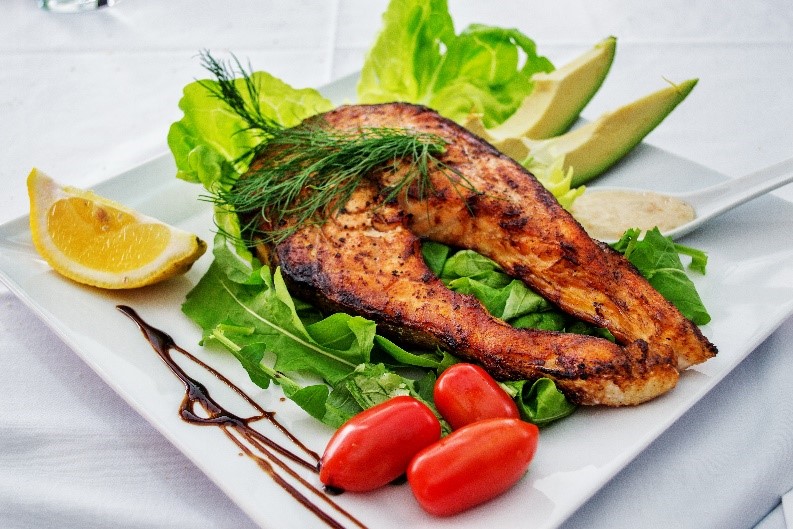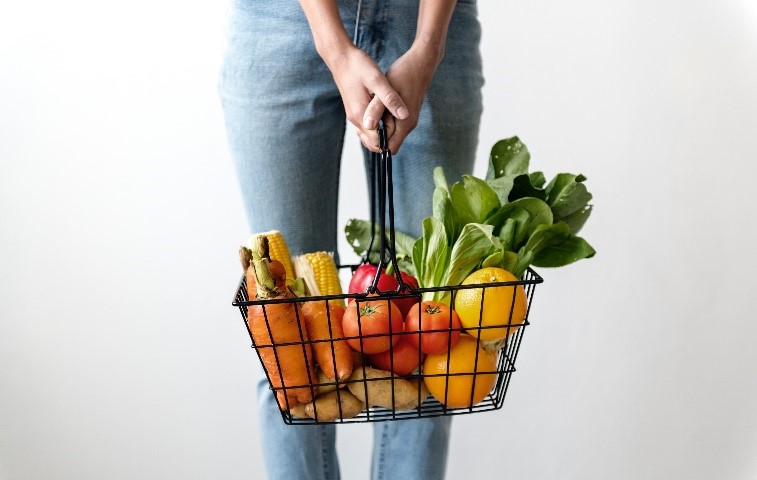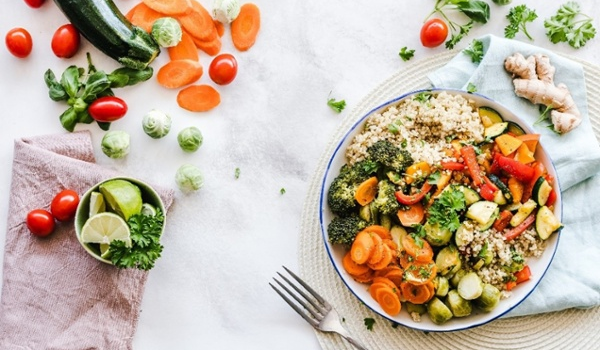If every time you scroll through social media or walk through the grocery store, it feels like you need an urban dictionary to keep up with all the new food lifestyle terms, don’t feel alone! I went to college for Nutrition and still continuously have to remind myself what defines something as Keto, Whole30, Paleo… and the list goes on. To help navigate these different food lifestyles, we’ve recapped what each means—including the associated “rules” and routines—and we hope that this new understanding will help you better leverage your fresh products, and content, to these hungry shoppers.
The reality is that fresh produce is the “star” (or at the very least, plays a major supporting role) in all of these diets. Thus, there is huge benefit for produce marketers to understand how they relate to your products.
The Diets
Keto (also known as the Ketogenic Diet)

1. What it means:
“The keto diet is a low-carb, high-fat diet. It lowers blood sugar and insulin levels, and shifts the body’s metabolism away from carbs and towards fat and ketones.” – Healthline
While this “diet” might seem counter to the fresh produce industry, there is far more to it than just a meat- and dairy-saturated meal plan, like some think. Those who truly understand the guidelines know that vegetables and fruit should not be excluded from one’s daily life, but rather enjoyed in moderation and in low-carb forms.
2. Guidelines
-
- Standard Ketogenic Diet (or SDK) is: 75% fat, 20% protein, and 5% carbs
- Foods to avoid:
- Grains or Starches
- Fruit (except those that are low-carb)
- Beans or Legumes
- Root Vegetables and Tubers
- Sugar and Sugar Replacers (unless not sugar alcohol-based)
- Alcohol
- Low Fat and Diet Products
- Most conventional condiments and sauces
- Foods to Eat:
- Meat
- Fatty Fish
- Eggs
- Dairy
- Examples include: Grass-fed butter and cream and unprocessed cheese
- Seeds and Nuts
- Low-Carb Veggies
- Examples include: spinach, avocado, cabbage, kale, and green beans
- Low-carb Fruits
- Examples include: Berries, tomatoes, rhubarb, watermelon, cantaloupe, and lemon
- Healthy Oils
- Spices
- Hashtags to use: #KetoDiet, #Keto, #LowCarb, #Ketogenic, #KetoRecipe
Of all the different diets we will go over in this post, keto may seem the most difficult to position your fresh produce depending on its inherent carb count.
If your product makes the low-carb list , YAY: leverage that messaging! Also look into your current recipes and determine if any already meet the above criteria, or if small modifications could be made to help make them fit the bill.
Paleo

1. What it means:
“A paleo diet typically includes lean meats, fish, fruits, vegetables, nuts and seeds—foods that in the past could be obtained by hunting and gathering.” – Mayo Clinic
This diet is less restrictive with fresh produce compared to keto, and provides brands in the industry a host of opportunities to leverage their farm fresh products.
2. Guidelines
- Foods to avoid:
- Grains
- Legumes
- Dairy
- Refined Sugar
- Salt
- Potatoes
- Highly Processed Foods
- Foods to eat:
- Vegetables
- Fruit
- Lean Meats
- Seafood
- Eggs
- Nuts and Seeds
- Coffee and Tea
- Hashtags to use: #Paleo, #PaleoDiet, #CleanEating, #PaleoRecipe
Whole30

1. What it means:
“Eat meat, seafood, and eggs; vegetables and fruit; natural fats; and herbs, spices, and seasonings. Eat foods with a simple or recognizable list of ingredients, or no ingredients at all because they’re whole and unprocessed.” – Whole30 Program
Think of this as a further refined version of paleo. With Whole30 and its focus on whole, fresh, and unprocessed foods, opportunities abound for the fresh produce industry!
2. Guidelines
- Foods to avoid:
- Grains
- Legumes
- Dairy
- Real or Artificial Sugars
- Alcohol
- Carrageenan, Sulfites, and MSG
- No Baked goods (even with “permitted” ingredients)
- Exceptions:
- Ghee
- Fruit Juice
- Specific Legumes
- Examples include: green bean, sugar snap peas, and snow peas
- Vinegar
- Coconut Aminos
- Salt
- Foods to eat:
- Vegetables
- Fruit
- Unprocessed Meat
- Seafood
- Eggs
- Nuts and Seeds
- Coffee and Tea
- Hashtags to use: #Whole30, #GlutenFree, #EatClean, #Whole30Recipe
The Opportunities for Fresh
After reviewing the general do’s and don’ts for these diets, it should be clearer where your product will fit into the different plans and where it won’t. We suggest the following to start leveraging your brand to those in these demographics:
- Work with a dietitian or nutritionist to audit your existing recipes to determine which ones can be classified into these diets and added to your website, or find where small modifications could be made in order to make a recipe compliant.
- You can also leverage their credentials to avoid making health claims that would not be advantageous for your brand without the appropriate expertise to back up those claims
- Partner with influencers who specialize in living these kinds of food lifestyles to generate new content for your brand, and leverage your healthy product to their hungry followers.
- Share related content and messaging on social media—and try out some of the above hashtags while you’re at it! There’s no end to the number of ways you can position your products relative to trending diets.
Have something to add? Leave us a comment below or reach out to us on Twitter @TheCoreBlog!
{{cta(‘fbc3d34f-cf67-49f8-9826-6a9a4c06733c’)}}












